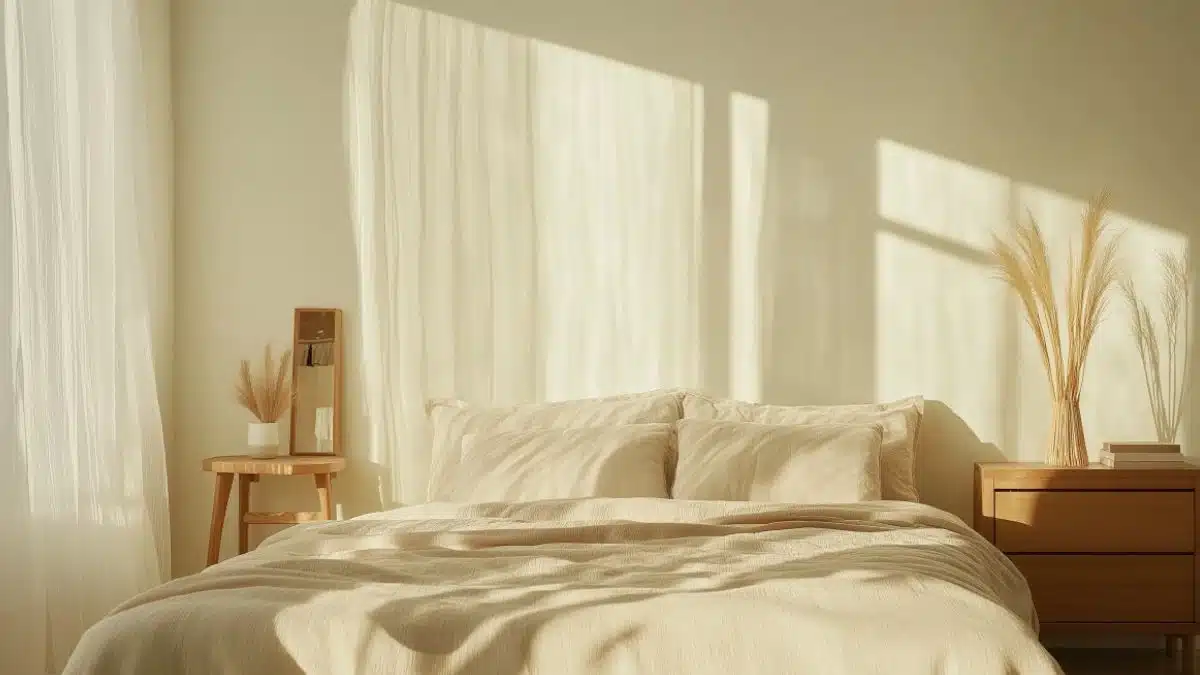Minimalist Redecorate Bedroom Tips for Serene Spaces
Table of Contents
In a world filled with constant notifications, visual noise, and fast-paced routines, your bedroom should be your personal haven. Yet many modern bedrooms are overloaded with furniture, bold patterns, or unused décor that creates mental and visual clutter. According to a study by UCLA, people living in cluttered environments report higher levels of cortisol, the stress hormone—especially in their bedrooms. If you’re longing for calm, clarity, and rest, a minimalist bedroom might be your perfect solution.
Redecorating a bedroom with minimalist principles doesn’t mean sacrificing comfort or personality. On the contrary, it’s about intentionally choosing elements that foster tranquility, reflect your style, and keep distractions to a minimum. This post offers step-by-step minimalist redecorating tips designed for serene spaces—perfect for small bedrooms, modern homes, or anyone looking to downsize visually without losing warmth.
We’ll explore how to simplify your furniture layout, use color psychology, embrace texture over clutter, and optimize natural light—all tailored to minimalist design. You’ll also find practical visual breakdowns, expanded examples, and curated MidJourney image prompts to inspire your own calming sanctuary.
Choose a Neutral Color Palette for a Calming Foundation
Color sets the mood of any room, and in minimalist bedrooms, the palette is essential. Neutral tones like soft whites, light taupes, warm grays, and muted beige provide a calming foundation that encourages rest and reduces visual noise. Unlike bold, saturated hues, these tones reflect natural light and make a small space feel more open and breathable.
Using one or two base colors throughout the space also creates visual continuity. You can add depth through subtle gradients or by incorporating natural textures like linen, wood, or wool in those tones. For example, a warm white on the walls paired with light oak furniture and creamy cotton bedding creates a harmonious and cozy look without any clutter.
Color Tips Table:
| Color Choice | Effect on Mood | Best Use |
|---|---|---|
| Warm White | Clean, restful | Walls, bedding, window trims |
| Muted Gray | Balanced, serene | Area rugs, upholstery |
| Soft Taupe | Earthy, comforting | Throw pillows, blankets |
| Pale Sage | Organic, tranquil | Accent walls, planters |
Invest in Multi-Functional Minimalist Furniture
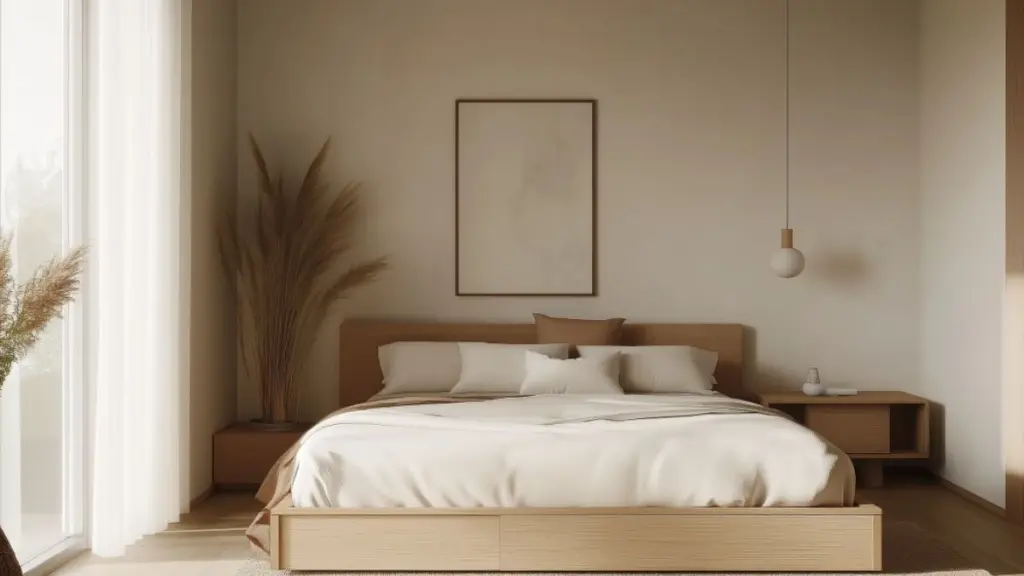
One key to successful minimalist redecorating is choosing furniture that serves multiple purposes. This is especially important in small spaces where every item needs to earn its place. Look for minimalist designs with clean lines—no ornate carvings or flashy hardware. Think under-bed storage drawers, floating nightstands, or benches with hidden compartments.
A sleek platform bed can offer both style and functionality. Pair it with a narrow console table that acts as both a desk and a vanity, or a wall-mounted shelf that doubles as a headboard. Prioritize items that combine beauty and function without overwhelming the space.
Furniture Solutions Breakdown:
| Furniture Piece | Function 1 | Function 2 |
|---|---|---|
| Platform Bed with Drawers | Sleeping | Clothing storage |
| Floating Shelf Nightstand | Surface for lamp | Hidden cable storage |
| Ottoman Bench with Lid | Seating | Linen storage |
| Wall-Mounted Mirror Cabinet | Mirror | Small accessory storage |
Clear Visual Clutter by Minimizing Décor
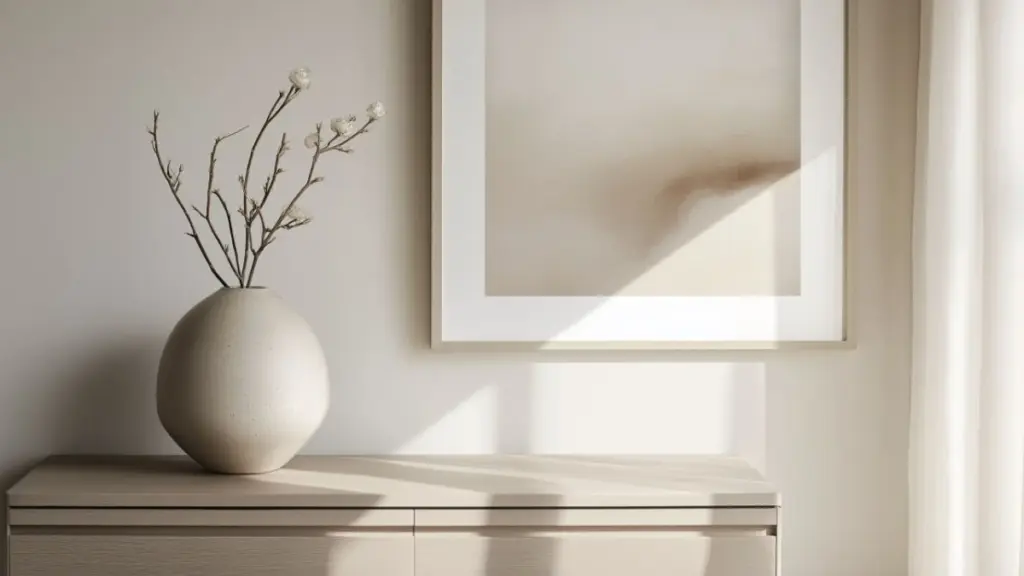
Minimalist design thrives on the idea that less is more—but that doesn’t mean you need to eliminate all decoration. Instead, be intentional with what you display. Choose one or two statement pieces like a large framed abstract print or a ceramic vase on a dresser. Stick to décor that evokes calm or has a personal, emotional connection.
Avoid busy gallery walls or small knick-knacks scattered across surfaces. Opt for balance and negative space—it gives your eyes room to rest. If you’re unsure about an item, ask: “Does this add serenity to the space?” If not, it likely doesn’t belong.
Visual Clutter Evaluation Checklist:
| Décor Item | Keep It? | Reason |
|---|---|---|
| Framed nature print | ✅ | Calming, large focal point |
| 4 small candles | ❌ | Repetitive, adds visual noise |
| Jewelry stand | ✅ | Practical and visually neat |
| 6 family photos | ❌ | Too busy—choose one instead |
Maximize Natural Light and Light Reflective Surfaces
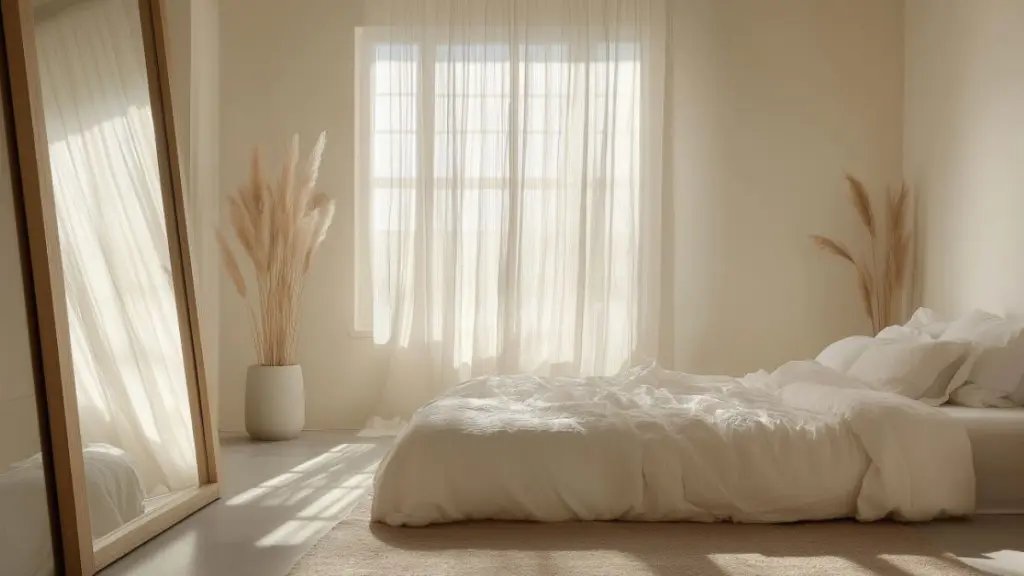
Natural light not only improves mood but also enhances the open feel of a minimalist bedroom. Avoid heavy, dark curtains. Instead, opt for sheer panels or light-filtering Roman shades. Mirrors are another powerful tool—they reflect light, making the room feel larger and brighter.
Position mirrors opposite windows or place a large leaning mirror behind a minimal chair to bounce light across the room. Choose white or matte metallic frames to keep the look clean. If your room lacks sunlight, add soft white LED lamps with dimmers for warm, adjustable brightness.
Light Optimization Guide:
| Strategy | Benefit | Implementation Tip |
|---|---|---|
| Sheer Curtains | Diffuse natural light | Choose floor-length for elegance |
| Wall Mirrors | Reflect light, expand space | Place across from window |
| Light Wall Paint | Increases brightness | Use satin or eggshell finish |
| Adjustable Lamps | Cozy ambiance | Use warm light under 3000K |
Use Textiles for Warmth Without Overcrowding
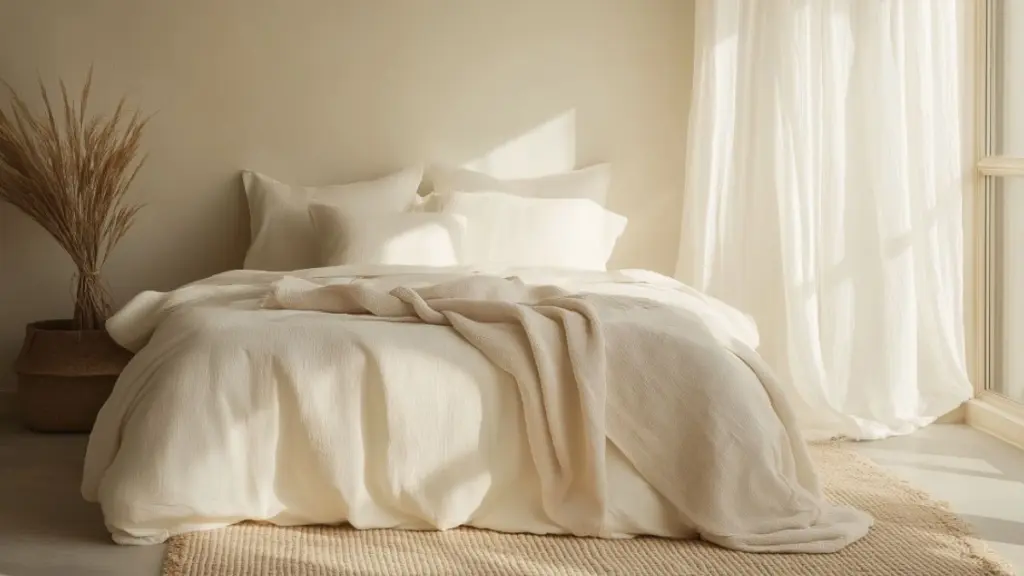
Minimalist bedrooms can sometimes feel cold if textures are ignored. Layering soft textiles adds comfort while still maintaining visual simplicity. Use a plush area rug, linen duvet, and one or two throw pillows. Stick to a restrained color palette and natural materials like cotton, wool, or bamboo.
This is also an opportunity to play with tone-on-tone layering—combine creamy white sheets with a textured ivory blanket or contrast a smooth wooden floor with a woven jute rug. Keep patterns subtle or opt for solid colors with rich textures.
Minimalist Textile Layering Chart:
| Textile Type | Best Texture | Minimalist Tip |
|---|---|---|
| Duvet Cover | Linen or Cotton | Choose solid, calming shades |
| Throw Blanket | Knit or Waffle Weave | Stick to 1–2 layers max |
| Rug | Low-pile or Jute | Light or neutral-toned preferred |
| Curtains | Sheer or Muslin | Let natural light filter through |
Declutter with a Purposeful Storage System
Decluttering is essential for any minimalist makeover, but it’s most effective when paired with intentional storage. Rather than just “hiding” things, aim to reduce the overall volume of items in your space. Start with a purge—donate anything you haven’t used in six months. Then, categorize what’s left and find dedicated spots for each category.
In minimalist bedrooms, opt for hidden storage. This could include built-in drawers under the bed, storage baskets inside your closet, or even a storage headboard. Use dividers in drawers to keep everything neatly in place and avoid accumulation of “junk zones.”
Step-by-Step Decluttering Table:
| Step | Action | Time Estimate |
|---|---|---|
| Step 1 | Remove everything from surfaces & floor | 15–20 mins |
| Step 2 | Sort into keep, donate, toss | 30 mins |
| Step 3 | Store only necessary items in hidden areas | 20–30 mins |
| Step 4 | Label or containerize remaining items | 15 mins |
Create a Restful Sleep Zone
Minimalist bedroom design isn’t just about aesthetics—it deeply affects your sleep quality. One of the most impactful ways to enhance serenity is by designing a sleep zone that signals rest to your brain. This includes eliminating electronic distractions, using soft lighting, and choosing supportive, breathable bedding.
Start by positioning your bed away from direct light sources and electronics. Add blackout curtains if you’re sensitive to morning light or live in an urban area. Consider aromatherapy diffusers with calming essential oils like lavender or sandalwood. Keep a small journal or book on your nightstand instead of your phone.
Sleep Zone Setup Table:
| Element | Ideal Minimalist Choice |
|---|---|
| Bedding | Breathable cotton, neutral tones |
| Lighting | Warm-toned, dimmable bedside lamp |
| Noise Control | White noise machine or thick rug |
| Scent | Lavender diffuser or cedar block |
| Tech Removal | No screens within arm’s reach |
Conclusion
A minimalist bedroom is more than just a design trend—it’s a lifestyle choice that prioritizes calm, clarity, and restfulness. By choosing a soothing palette, decluttering with intention, incorporating texture over trinkets, and maximizing light and functionality, you can transform any space into a serene retreat. Whether you’re working with a tiny studio or a spacious master bedroom, these minimalist redecorate bedroom tips will guide you toward creating a haven that reflects tranquility and supports your well-being.

